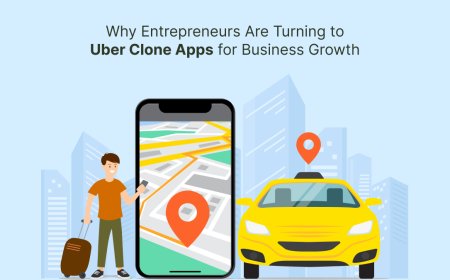What CIOs Should Know Before Implementing AI in Their Customer Service Tech Stack
Discover essential insights for CIOs on integrating AI into customer service tech stacks. Enhance efficiency and customer satisfaction with informed strategies.

In todays digital-first world, enterprise customer service is undergoing a dramatic transformation. CIOs are under increasing pressure to modernize their tech stacks with AI-driven customer engagement solutions, but the journey to a successful implementation isnt as simple as flipping a switch.
Before rushing into new technologies, CIOs and IT decision-makers need to take a strategic approach. From intelligent automation and omnichannel communication to voice AI and CRM integrations, the options are vast, and so are the challenges.
In this blog, well break down what CIOs should know before implementing AI into their customer service infrastructure, with a focus on powerful tools like Cisco Dialogflow Integration and WhatsApp calling with Cisco. Whether you're exploring conversational AI or enhancing agent productivity, this guide is your roadmap to smart, future-ready decision-making.
Why AI in Customer Service Is No Longer Optional
AI isnt just a trend; its quickly becoming the backbone of modern customer service. Todays customers expect real-time support, seamless handoffs between channels, and highly personalized experiences.
According to Gartner, over 70% of customer interactions will involve emerging technologies like machine learning, chatbots, and voice assistants in the coming years. With the right AI strategy, enterprises can:
-
Reduce customer wait times
-
Automate repetitive queries
-
Free up agents for high-value conversations
-
Gain insights through analytics and sentiment tracking
-
Scale support across global markets
But achieving these benefits depends on how well AI is integrated into your existing ecosystem, especially your contact center platform.
#1 Understand the Role of Cisco in AI-Powered Customer Experiences
Many CIOs lean toward Cisco-powered contact center solutions for their security, reliability, and scalability. Platforms like Cisco Unified Contact Center Enterprise (UCCE) and Cisco Contact Center Express (UCCX) offer advanced capabilities, but their true power is unlocked when AI tools are layered on top.
Thats where Cisco Dialogflow Integration comes in.
Dialogflow, powered by Google Cloud, enables natural language processing (NLP) for sophisticated AI chatbots and voice bots. When integrated with Ciscos infrastructure, it becomes a game-changer for automation and self-service.
Benefits of Cisco Dialogflow Integration:
-
Build intelligent virtual agents for voice and chat
-
Seamlessly escalate to live agents when needed
-
Customize flows based on customer data and CRM history
-
Improve resolution time and satisfaction scores
But this integration requires careful planning. CIOs need to ensure API compatibility, session management, failover mechanisms, and security protocols are properly configured. Choosing the right implementation partner is just as important as selecting the technology itself.
#2 Prioritize Omnichannel Communication
AI in customer service cant thrive in a silo. Customers jump between channels, voice, chat, email, social media, and messaging apps. To truly support their journey, your tech stack must support omnichannel orchestration.
One of the most underrated channels today is WhatsApp.
With over 2 billion users globally, WhatsApp is becoming a preferred medium for support and updates. Integrating WhatsApp calling with Cisco enables enterprises to deliver secure, high-quality voice experiences directly within the app, a capability that's increasingly in demand for mobile-first customers.
Why You Should Care About WhatsApp Calling with Cisco:
-
Enable real-time voice conversations via WhatsApp
-
Leverage Ciscos telephony backbone for stable, global connectivity
-
Keep communication centralized and compliant
-
Automate initial interactions with bots before escalating to human agents
For CIOs, this isnt just about adding a channel; its about meeting customers where they already are, using AI and voice capabilities to drive meaningful engagement.
#3 Align AI Strategy with Business Objectives
Before deploying new AI features, CIOs must align them with broader organizational goals. Ask yourself:
-
Are we trying to reduce operational costs?
-
Is the goal to improve CSAT/NPS scores?
-
Do we want to expand to new regions with localized support?
-
Are we aiming to improve agent productivity?
The answers to these questions will shape your approach to what kind of AI models to use, which channels to focus on, and how success will be measured. A cookie-cutter implementation wont work here.
#4 Address Data Privacy and Security Early On
AI systems rely on data lots of it. From customer histories to real-time interactions, data fuels smarter responses. But with power comes responsibility. Enterprises must ensure:
-
GDPR and HIPAA compliance
-
Data encryption in transit and at rest
-
Role-based access and audit trails
-
Secure integration points with CRM and telephony systems
When deploying tools like Cisco Dialogflow Integration, its critical to verify how data is stored, accessed, and transmitted. Similarly, any solution involving WhatsApp calling with Cisco must adhere to strict enterprise-grade security standards, especially when handling sensitive customer information.
#5 Choose the Right Implementation Partner
Technology is only as good as its deployment. To bring solutions like Cisco Dialogflow Integration or WhatsApp calling with Cisco to life, you need a partner with deep expertise in:
-
Cisco Contact Center architecture
-
AI chatbot development
-
Multichannel orchestration
-
Telephony integration and SIP routing
-
Security and compliance frameworks
A reliable implementation partner can shorten your go-to-market time, reduce risk, and ensure your systems are optimized from day one. They can also help train your staff, monitor performance, and iterate based on real-world data.
#6 Invest in AI Training and Change Management
One of the most overlooked aspects of AI transformation is people. Your contact center agents, IT staff, and customer experience leaders must be trained to work alongside AI.
CIOs should:
-
Offer workshops on how AI bots handle queries
-
Teach agents how to take over conversations seamlessly
-
Define new KPIs for hybrid workflows
-
Encourage continuous feedback loops
AI is a powerful enabler, but it should augment, not replace, human intelligence.
Final Thoughts: The AI-Enabled Future Starts with Strategic Planning
Implementing AI into your customer service tech stack isnt a one-time project; its a continuous evolution. For CIOs, the goal should be to build a flexible, future-ready infrastructure that can scale, adapt, and deliver exceptional experiences across channels.
Technologies like Cisco Dialogflow Integration and WhatsApp calling with Cisco are no longer nice-to-haves. They are competitive differentiators that enable proactive, intelligent, and personalized support.
But success hinges on smart decision-making, aligning AI with business goals, selecting the right partners, ensuring data security, and preparing your people.


































